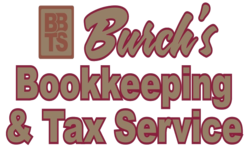 A lot of very busy people often tend to make their homes an extension of their offices by bringing home leftover work from the office. Aside from that, there are some people who actually make their living by working at home, such as in the case of many online freelancers like writers, web designers and so on and so forth. Now, home offices is something that not so many people usually care about, but not when the topic of the discussion moves on to home office tax liabilities – yes, it seems that as long as you are making an income or earning money, whether you are in your suit at the office, or in your pajamas at your home, you – will – be – taxed. But will paying taxes for your home office be the same as being taxed at work? Well, not quite so.
A lot of very busy people often tend to make their homes an extension of their offices by bringing home leftover work from the office. Aside from that, there are some people who actually make their living by working at home, such as in the case of many online freelancers like writers, web designers and so on and so forth. Now, home offices is something that not so many people usually care about, but not when the topic of the discussion moves on to home office tax liabilities – yes, it seems that as long as you are making an income or earning money, whether you are in your suit at the office, or in your pajamas at your home, you – will – be – taxed. But will paying taxes for your home office be the same as being taxed at work? Well, not quite so.
Saving on Tax Deductions
Where taxes are concerned, home offices can benefit you well since you should be able to enjoy some tax deductions on your home offices. For instance, you can deduct your home office furniture like desks and chairs from your taxes. You can also do the same for your actual home office, where you can deduct (by the square foot) a percentage of your mortgage. These tax deductions alone should be able to help you decrease the income tax and self-employment tax that you need to pay the government.
Home Office Taxation Methods
There are two different ways by which you can calculate and pay your taxes for your home office: the Simplified Home Office Deduction and the Regular Method.
Of the two, the Simplified Home Office Deduction method seems to a lot easier to understand and to use. What happens here is that you take the average price of $5 and multiply it per square foot of the part of the house that you use as your office. For instance, if you have a 300 square foot of home office multiplied by $5, you will have to pay the IRS $1,500 and that’s it. However, this method only applies to home offices which are 300 square foot or below. If you have a bigger home office, you will have to use the Regular Method, where you take the proportion of your home office and deduct it from your house’s utility, mortgage and other expenses. So for instance, if you use 500 square foot of your 5000 square foot home as your home office, you are basically using 10% of your house as an office, and can deduct 10% off from your, mortgage, property taxes and other business related home expenses.
Choosing between these two methods can be quite confusing, because although you may think that the first option will save you more money, some people have experienced the opposite. Thus, it is a good idea to talk to a business tax expert to help clarify things for you.


